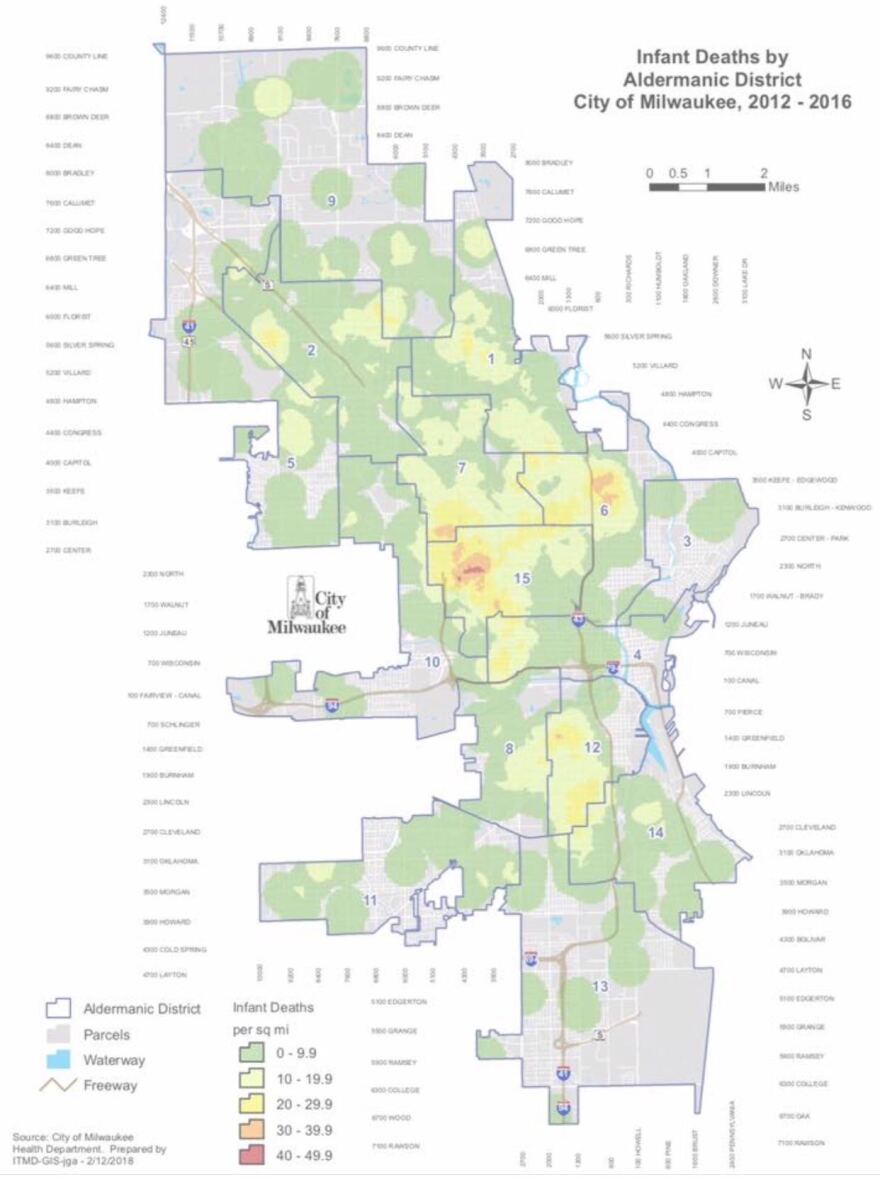The Get The Lead Out Coalition and the Freshwater For Life Action Coalition had been looking forward to formally sharing what they consider compelling evidence to Milwaukee city leaders for weeks. They insist contamination caused lead pipes through which more than 70,000 homes receive city water is as important a threat to public health as lead in paint.
A diverse crowd filled the third floor meeting room to watch the conversation unfold at the Common Council's Steering & Rules Committee Thursday. Chairman Ashanti Hamilton set the tone.
“I understand that this isn’t a popular presentation that most elected officials wanted to hear or folks in the administration,” Hamilton said.

Thomas Welcenbach, with the Get The Lead Out Coalition, has been flushing out city maps and other information.
“For the past year, the group has been working on sorting out some city data and state data and reports to kind of piece together what’s going on in the city here in terms of lead poisoning. So I’m going to scroll through some of these maps,” Welcenbach said.
One map depicted cases of infant death between 2012 and 2016. Welcenbach zeroed in on North Avenue. “From 43rd to 35th Street, so the map here is indicating that around 40 to 50 children died along North Avenue at this time period,” he said.
Welcenbach suspects that lead in water could be to blame in the infant deaths.

The group also says over time the city of Milwaukee hasn’t fully reflected the number of children diagnosed with elevated blood lead levels on their maps.
Welcenbach says in a square mile area, if fewer than 10 children tested high, no cases were shown at all.
“Let’s say they have 20 micrograms per deciliter in their blood, they have a high level of lead in their blood, but because there are not more than 10 children in this square mile area you don’t represent them,” he said.
"If you feel that this city, its government, its departments or any part thereof have been negligent and responsible for children being poisoned, we need to know it. We want to know it," Ald. Bob Donovan.
When Welcenbach pointed to another area of concern — the possibility of new homes hooking up to old lead service lines.
“We are in the belief that the houses are reconnecting to the private laterals because a lot of these vacant lots had foreclosed homes that were torn down,” he said.
Ald. Milele Coggs took exception, “I’ve had new homes built in my district. I know for a fact that a lot of them are not connected to old laterals.”
Welcenbach didn’t come close showing the committee the 80-slide presentation he had prepared.
Ald. Bob Bauman said it was time for a rebuttal. He shared an email from the city’s new water works commissioner.
“There’s an email here from Karen Dettmer to Ald. Bob Donovan from earlier this week and I’ll quote ‘Mr. Welcenbach’s theory is incorrect’, ” Bauman said.
Ald. Bob Donovan said, "If you feel that this city, its government, its departments or any part thereof have been negligent and responsible for children being poisoned, we need to know it. We want to know it."
No one from the mayor’s office attended the meeting, but in the past the administration has rejected claims that infants died because of lead in water and maintains paint is a bigger hazard by far.

Occasionally, an outsider helped defuse the tension-filled room. Paul Schwartz was visiting from Washington, D.C. He’s worked on national water issues for 40 years.
“The point is, how do we do an integrated program that reduces in an efficient and cost effective way the morbidity and mortality of the population of Milwaukee and that’s supported by sound science and by best practices. I think that we can all agree on that and hopefully we'll get to some answers on the questions that people are raising,” Schwartz said. “That will put us all in a better place ... and to move Milwaukee into a leadership role."
In the end, Hamilton said the conversation will continue – likely before the same committee.
Have an environmental question you'd like WUWM's Susan Bence to investigate? Submit below.
_






